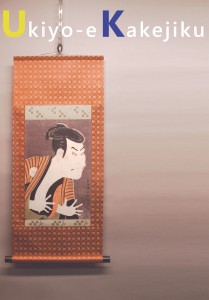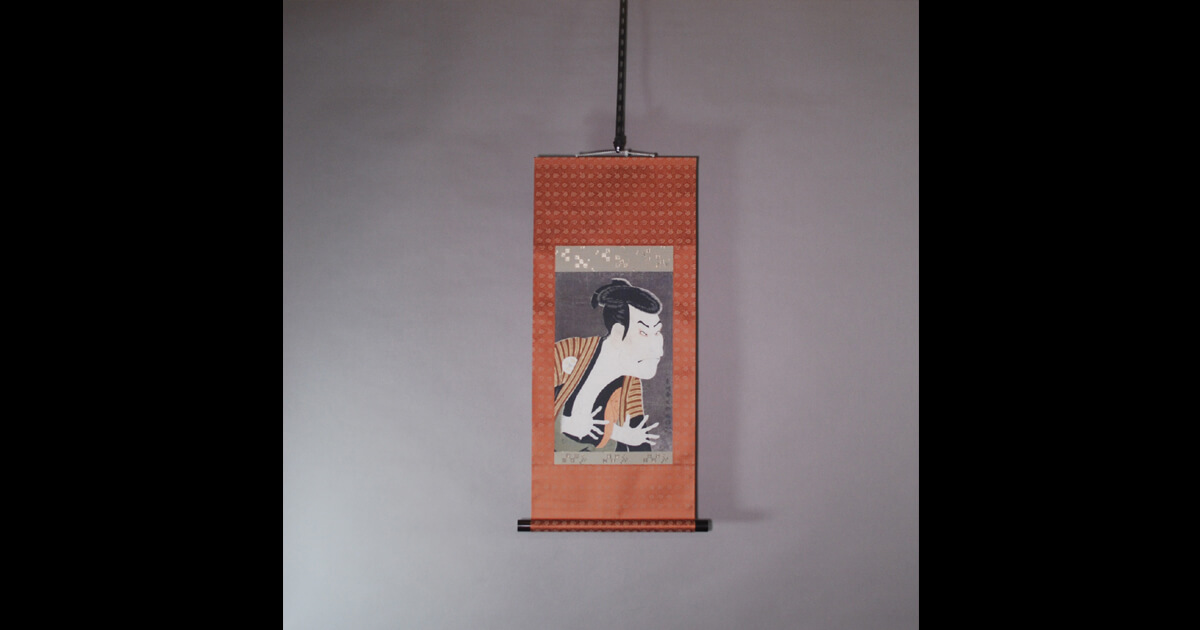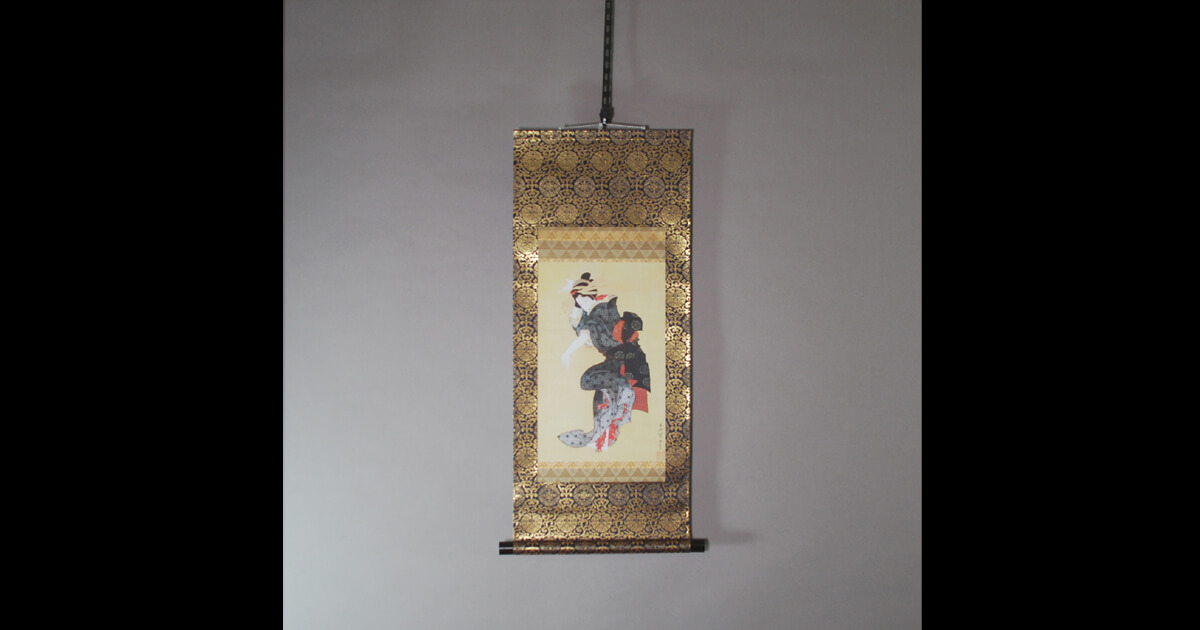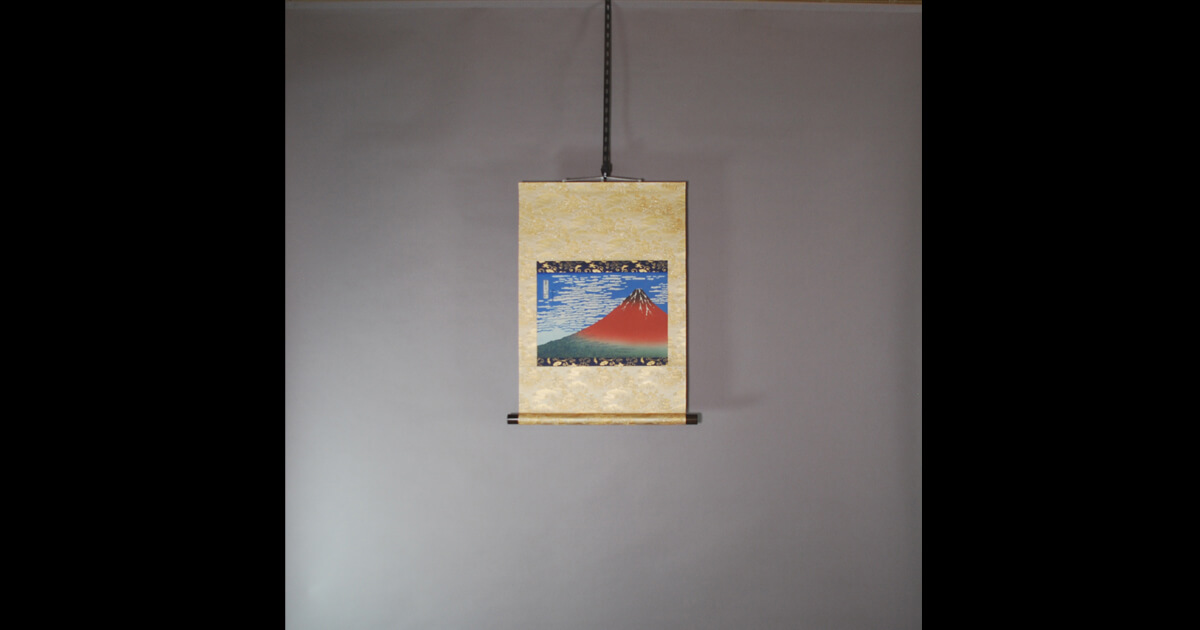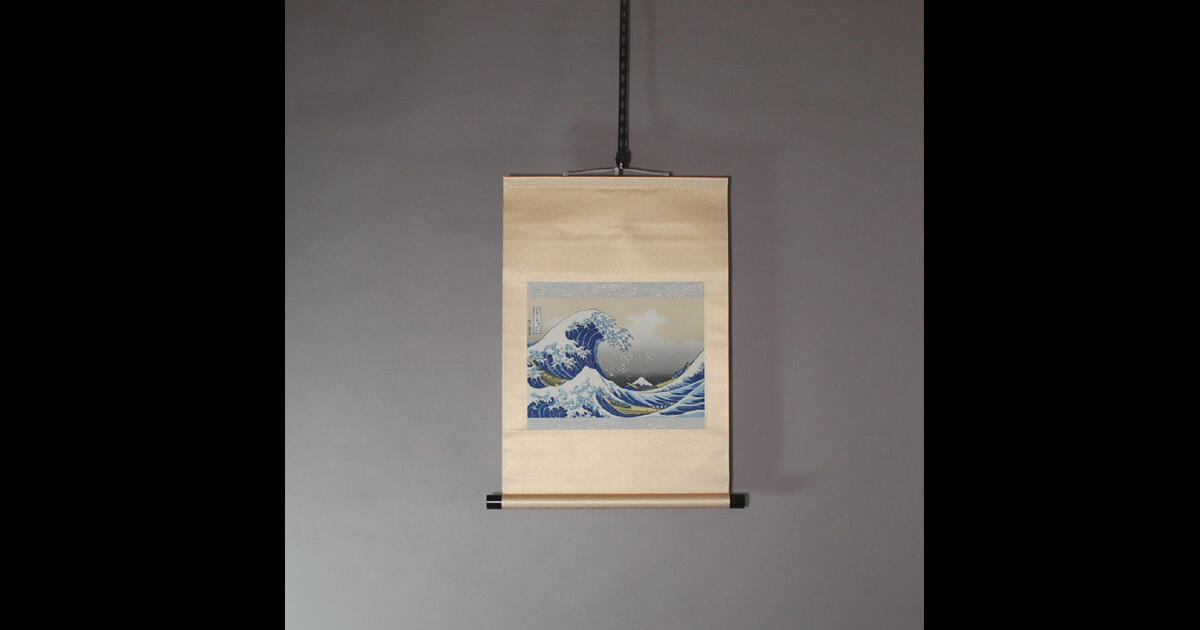Ukiyo-e Kakejiku: New Item to More Easily Enjoy Ukiyo-e Art
Ukiyo-e
Ukiyo-e is a genre of the pictorial arts that originated during the Edo period. Bold composition and bright colors are typical of Ukiyo-e.
Ukiyo-e has always amazed the world. It arrived in Europe in the 1860’s and influenced European impressionists heavily. Although art production was ruined after the Meiji Restoration, its impact continues to this day. Artistic influence has enriched European art and present Manga & Anime.
Ukiyo-e is perhaps the most famous Japanese visual art in the world. Ukiyo-e is the world’s only vividly-colored woodblock print; Western pictorial art has no such category, which is thought to encourage its appreciation. It is also valuable that Ukiyo-e is the only material in the world that depicts the varied lives of ordinary people in the Medieval period. According to the documents of the Meiji period, there were close to 2,000 Eshi painters until that time, if unknown Eshi painters are included. Because 100 to 200 pieces were printed for each work at that time, huge numbers of Ukiyo-e appeared in the cities and, unlike anywhere else in the world, high-quality works of art were very popular among ordinary people. There were many world-famous Ukiyo-e artists; Hokusai Katsushika, Hiroshige Utagawa, Sharaku Toushiuusai, etc.
To tell the truth, I was more familiar with Japanese-style painters, for example Oukyo Maruyama, Jakuchuu Itou, Soutatsu Tawaraya, Kourin Ogata, etc, than Ukiyo-e artists, even they were all artists of Edo period. This is because I deal in the kakejiku, in which Ukiyo-e has not ever been mounted. However I couldn’t leave Ukiyo-e as it is from the viewpoint of the influence of Japanese visual art, so I studied it again and was more absorbed in the Ukiyo-e world than I had expected. It goes without saying that Ukiyo-e has high artistic quality. Besides, there are many comical and witty artworks.
Shunga (erotic arts) were often sold in package deals. Because their selling prices were high, a lot of money could be used for production and high-level production techniques were employed. Therefore, it is said that the most significant technique of the ukiyoe was used for shunga. This fact is very impressive for me.
Segawa37 / Ukiyo-e Animated Gifs
I found an interesting article in Yahoo! News the other day. The title is “Ukiyo-e Animated Gifs Become a Popular Topic in the World.” Segawa37, a Japanese animator, posted a series of Ukiyo-e animated gifs which were remade by Segawa37 on Twitter because of a specifications change of Twitter. And then, they have received a great response in not only Japan but also the world. I wonder what the works are like and watched them. Then there were many amusing works.
Segawa 37 expressed the dynamic waves of Hokusai’s masterpiece “Great Wave off Kanagawa,” arguably the most famous Ukiyo-e of all on his own animated gif work. In the work “Yoshida at Toukaidou,” which has unique composition of Mt. Fuji seen from a tea house, a bullet train is running by the tea house. In other comical work, a kimono-clad woman emits a laser beam toward an aircraft. Segawa37 expresses the attractiveness of Ukiyo-e in a modern style. I found the reason why these animated gifs became a popular topic all over the world. In addition, I recognized again how popular Ukiyo-e is in the world.

Great Wave off Kanagawa / Hokusai Katsushika

Yoshida at Toukaidou / Hokusai Katsushika

Morning in Winter / Hokusai Katsushika

Oniji Ootani III (aka. Nakazou Nakamura II) as Edobee / Sharaku Toushuusai
Ukiyo-e Kakejiku
Ukiyo-e were originally woodblock prints, but there are now many reprinted versions of Ukiyo-e thanks to recent advancement in printing technology. However, most of them are framed. They are too bulky to carry easily, so they are therefore slightly inconvenient as souvenirs or gifts. Even if you only get the work itself, you will have to take it to a frame shop. Moreover, if you want to change position of the framed work on your gallery wall depending on how you feel during the day, it will be a little bothersome because of its bulk and weight. If you want to store the work until the best position is decided, it will take up a lot of space. You can never fold it.
I considered what to do to get more people to enjoy Ukiyo-e, whose popularity hasn’t declined yet. And then, I thought of ”Ukiyo-e Kakejiku.”
Japanese people enjoy changing paintings depending on occasions, guests and the seasons. The kakejiku (Japanese hanging scroll) is the most suitable form of picture in terms of allowing ease in changing the paintings at any time. The beauty of scrolls is that they can be rolled up, which makes them compact, portable and easy to store. Moreover the kakejiku is very light and easy to handle. Ukiyo-e Kakejiku makes good use of the features of the kakejiku. You can easily change your own wall gallery depending on how you feel that day.
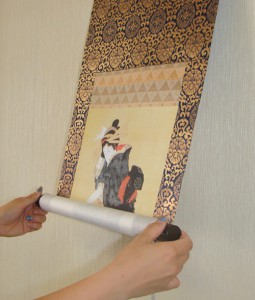
You can roll the Ukiyo-e Kakejiku up easily
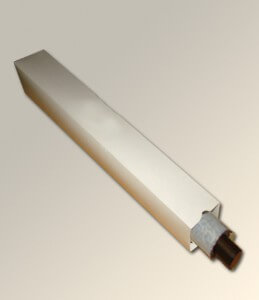
You can store the Ukiyo-e Kakejiku compactly
In addition, the mounting, which is both decorative and also serves to protect the main work, is called the hyougu. People see the combination of the two as one work of art and appreciate this. Elegant, gorgeous damask (donsu) and gold brocade (kinran), made in the Nishijin district of Kyoto, are used for the Ukiyo-e Kakejiku. Compared with dull frames, hyougu can give a more unique atmosphere to your room.
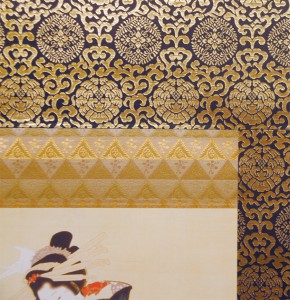
Kinran (Gold brocade)
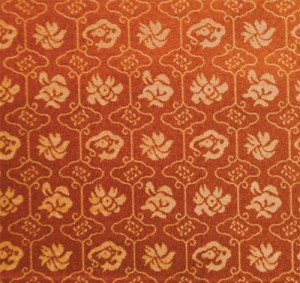
Donsu (Damask)
Products
As Segawa37 conveyed the attractiveness of Ukiyo-e through gifs, I would like more people around the world to enjoy it through the kakejiku.

